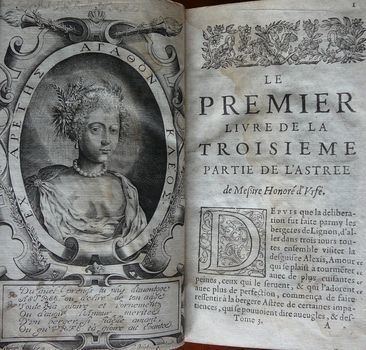Nationality French Name Jeanne de | Occupation Aristocrat | |
 | ||
Full Name Jeanne Camus de Pontcarre Born 1705 Kingdom of France Died 13 November 1775 (age 70) | ||
Jeanne Camus de Pontcarre, marquise d’Urfe (1705-1775), was a French aristocrat and eccentric widow, with a passion for the occult and alchemy. Rich and gullible, she is better known under the name Madame d’Urfe from the biographies of several adventures of the 18th century such as Cagliostro and Casanova.
Contents
Early Life & Marriage
Born in 1705, with the maiden name Jeanne Camus de Pontcarre she is the daughter of Nicolas Pierre Camus de Pontcarre, the first president of the parliament of Rouen.
On September 11, 1724 she married Louis-Christophe de la Rochefoucauld-Lascaris (1704-1734), Marquis de Langeac and Urfe. They had three children:
Young Widow
In 1734 her husband died, leaving her a twenty-nine-year-old widow with the freedom to devote her time and fortune to her alchemical ambitions (she is described by the Marquise de Crequy as "the most stubborn of the alchemists and the most determined complainers of her time"), before squandering the rest with occult adventurers.
This lead her to meet the Count of St. Germain with whom she worked for 4 years on trying to find the philosopher's stone, an endeavour which cost her nearly one hundred thousand ecu. A few years later she met the Count of Cagliostro who made her spend four to five hundred thousand francs in an attempt to summon the spirits of Paracelsus and Moitomut, who were supposed to reveal to him the last of the Grand Arcanum works.
In 1757, she lived in Paris on the Theatine dock (Quai Voltaire since 1791) next to the Hotel de Bouillon, where she met Casanova. By the middle of that year Casanova had successfully treated the sciatica of Nicolas de la Tour d'Auvergne (1720-?) with a pentagram and a few magic words. Excited by this accomplishment he presented it to his aunt the Marquise d'Urfe.
According to his own memoirs, Casanova made her believe that he had powers and agreed to help her be reborn in a new body. For this endeavour Madame d'Urfe (also his occasional lover) went on to finance his travels and research, also giving addresses and letters of recommendation. "She ended up falling into the hands of another Italian impostor, named Casanova, who had the delicacy to never ask her for money, but only for expensive gemstones in order to form constellations" says the Marquise de Crequy.
In 1763, she finally pressed Casanova to perform her rebirth. Casanova proposed to impregnate her with herself during a magical threesome ceremony, so that she may give birth to a male (supposed to hold more occult powers) in which her soul will be transmitted through childbirth. She will break her relationship with him the same year when a former accomplice of Casanova denounced all his treachery in order to become her new wizard. In his memoirs, Casanova concealed this fact by alleging that Madame d'Urfe died that year.
In addition to her esoteric research, Madame d'Urfe heard voices and believed herself to be in regular communication with spirits. This is evoked several time by Casanova in his memoirs, as well as Great Landgrave, Caroline of Hesse (1721-1774, wife of Louis IX of Hesse-Darmstadt), who wrote April 7, 1758 "There's a Madame d'Urfe in Paris, clever woman, but who believes herself in communication with sylphs and genies."
Madame d'Urfe died 13 November 1775 at the age of seventy.
